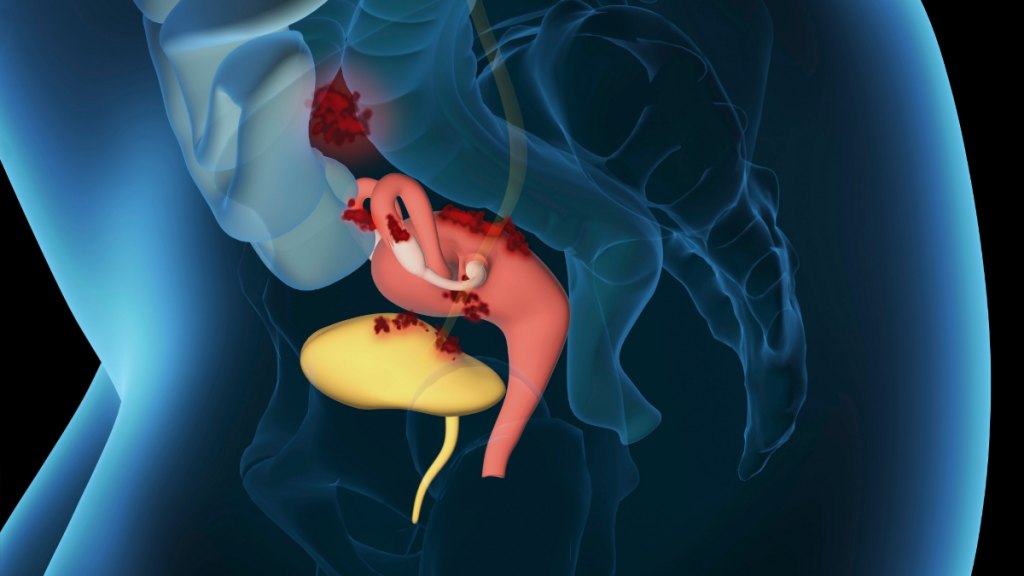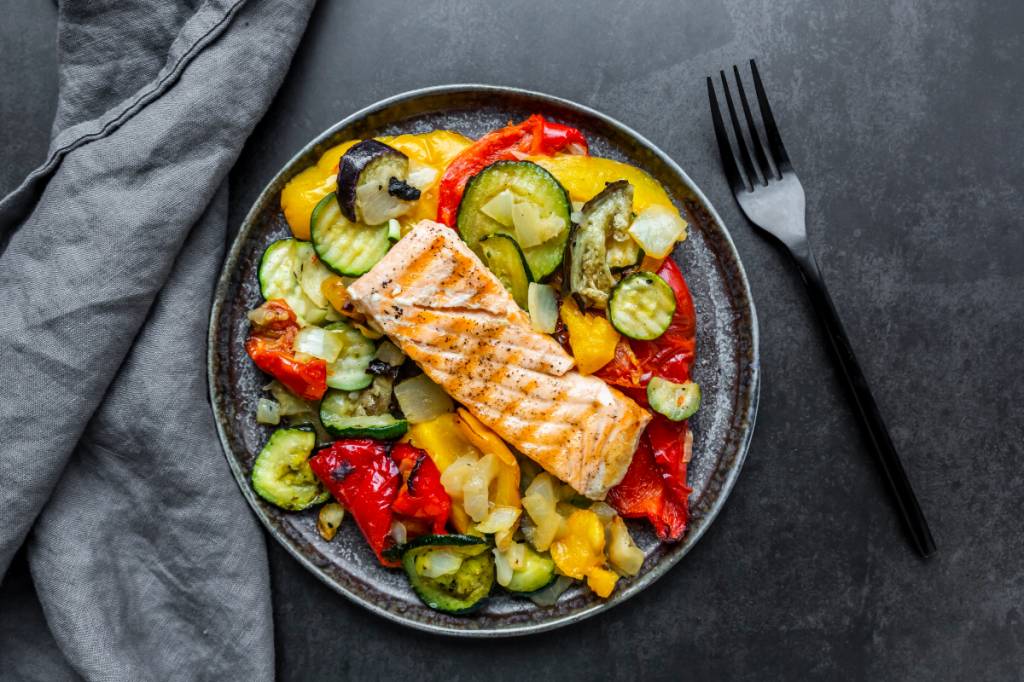For many women with endometriosis, an expanding waistline is an unwelcome surprise. Often referred to as “endo belly,” this side effect of the condition that impacts your reproductive system can be uncomfortable and disrupt your daily life. But can endometriosis actually cause weight gain, or is something else to blame for an endo belly? Keep reading to learn what a top expert has to say about endo belly, plus discover easy ways to get long-term relief from this painful symptom of endometriosis.
What is an endo belly?
To understand an “endo belly”, you first have to know a little bit more about the condition behind it. “Endometriosis is a condition where tissue similar to the lining of the uterus grows outside the uterus,” explains Anna Cabeca, DO, Ob-Gyn, a triple-board certified women’s health expert. Your fallopian tubes, ovaries and tissue in the pelvis can all be affected. And this tissue responds to hormones the same way as your typical uterine lining does during the menstrual cycle, which can often lead to symptoms like pain, cramping and heavy bleeding. While the exact cause of the condition is still unknown, the World Health Organization estimates it affects about 10 percent of women of reproductive age.

While many people believe that endometriosis can cause weight gain and lead to an endo belly, that’s not exactly the case. “Endo belly is primarily caused by bloating, not weight gain,” says Dr. Cabeca. As tissue grows outside the uterus, endometriosis can trigger inflammation.
“This inflammation can cause the intestines to become irritated, leading to bloating, gas and constipation,” explains Dr. Cabeca. She adds that hormonal fluctuations can also exacerbate these symptoms, which is why many women experience more symptoms of endo belly during their menstrual cycle.
Endo belly and regular old bloating can feel significantly different, adds Dr. Cabeca. “While both can cause a swollen, uncomfortable abdomen, endo belly often presents with more intense and persistent symptoms. The bloating can be so severe that it can look like pregnancy.” Women with endo belly also typically experience pelvic pain, especially around and during their menstrual cycle. And it’s often accompanied by other GI symptoms like gas, constipation and diarrhea.
Can endometriosis cause weight gain?
The bloating and fluid retention many women experience due to endometriosis may mimic weight gain, but the condition won’t directly cause you to gain weight. However, people with chronic pain conditions like endometriosis may struggle to stay active, which is associated with weight gain, per a 2015 study in the Journal of Pain Research. Dr. Cabeca adds that “some medications used to treat endometriosis, such as hormonal birth control, can cause weight gain and bloating as side effects.”
How to treat an endo belly
Thankfully, simple lifestyle tweaks can relieve symptoms of an endo belly. Here, some of the best home treatment options:
Fill up on fiber and omega-3s
“Dietary habits can significantly help alleviate endo belly symptoms,” notes Dr. Cabeca. An anti-inflammatory diet rich in omega-3 fatty acids is particularly effective at easing symptoms. Found in foods like salmon, mackerel, flax and chia seeds, these healthy fats are proven to ease inflammation and are associated with a lower overall risk for endometriosis, per a study in Human Reproduction. Plus, animal research published in 2019 suggests that omega-3 supplementation reduces endometriosis pain.

Dr. Cabeca also recommends including fiber-rich foods, since they “help regulate digestion and reduce bloating.” Brown rice, quinoa and legumes like lentils, chickpeas and beans are all good options.
Overall, Dr. Cabeca recommends trying her Keto-Green plan, which emphasizes these nutrients and may help alleviate endo belly symptoms.
Try yoga
In a 2016 study published in the Journal of Alternative and Complimentary Medicine, two 90-minute yoga sessions each week helped women with endometriosis reduce chronic pelvic pain and improve their overall quality of life. Dr. Cabeca agrees that “gentle yoga poses can be beneficial in easing bloating during a flare-up.”
She recommends Child’s Pose to relax the body and tame stress and Knee-to-Chest Pose, Cobra Pose and Twists to help ease bloating, stimulate digestion and relieve gas.
If you’re looking for a guided yoga practice, this gentle, 20-minute yoga for endometriosis flow can help alleviate endo belly symptoms:
Drink up
Dr. Cabeca explains that staying hydrated can aid in digestion to ease the painful bloat from endo belly. In fact, in a study published in 2021 in BMC Women’s Health, women who increased their water intake reported significantly less pain and used fewer pain relieving medications during their menstrual cycle. They drank about 8.5 cups spread throughout the day to get the benefits.
Use heat therapy
Most of us have curled up with a hot water bottle or heating pad during our menstrual cycle to try to ease cramps, and it’s a common coping method for 74 percent of people with endometriosis, according to a 2024 study in Frontiers in Reproductive Health. Dr. Cabeca explains that heat can relax muscles, ease inflammation and tame pain. “By applying heat to your abdomen, you can help soothe the discomfort associated with endo belly.”
Aim for about 10 to 20 minutes of heat therapy at a time, and be careful to avoid using a heating pad that’s too hot.
This content is not a substitute for professional medical advice or diagnosis. Always consult your physician before pursuing any treatment plan.




